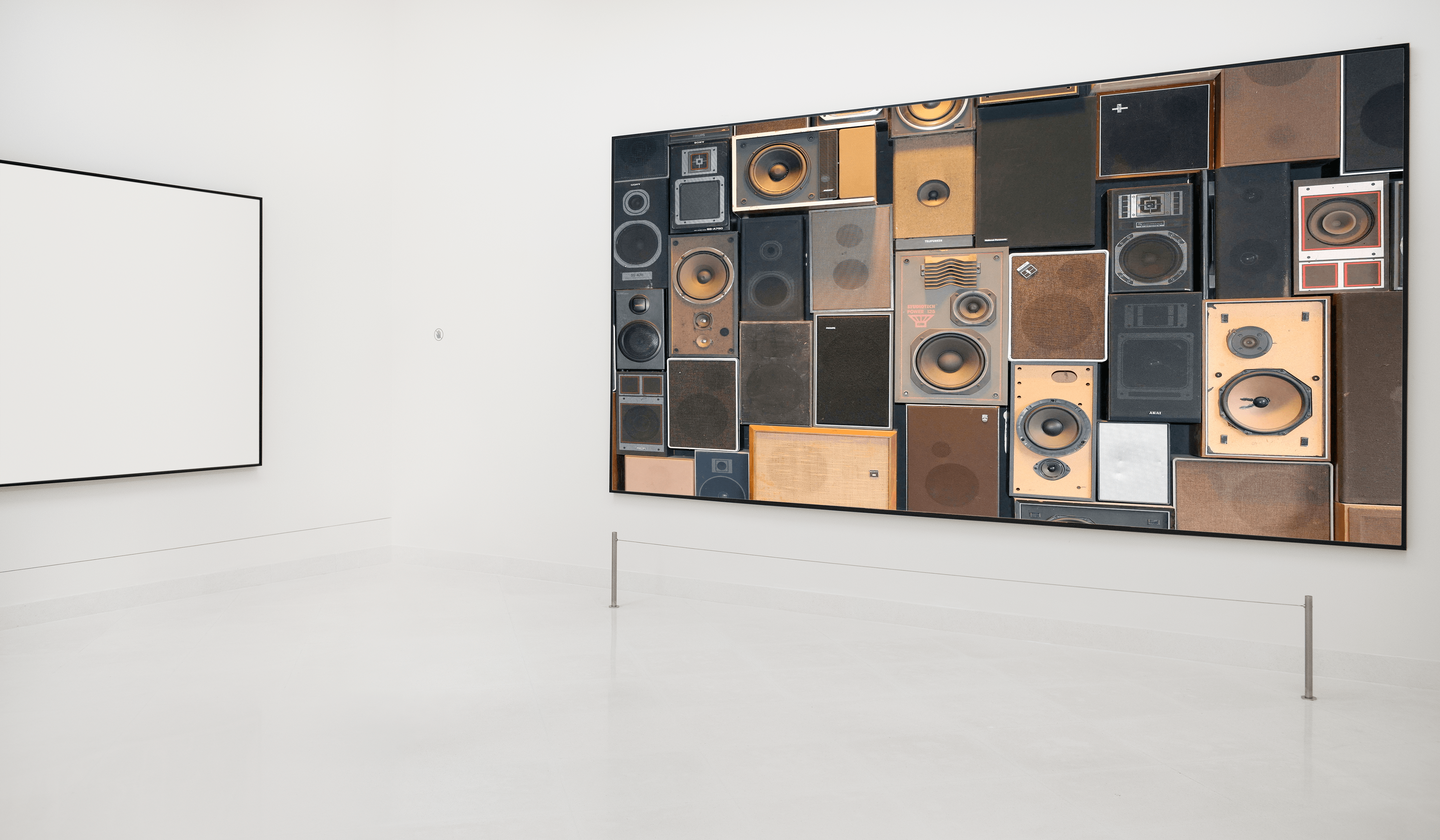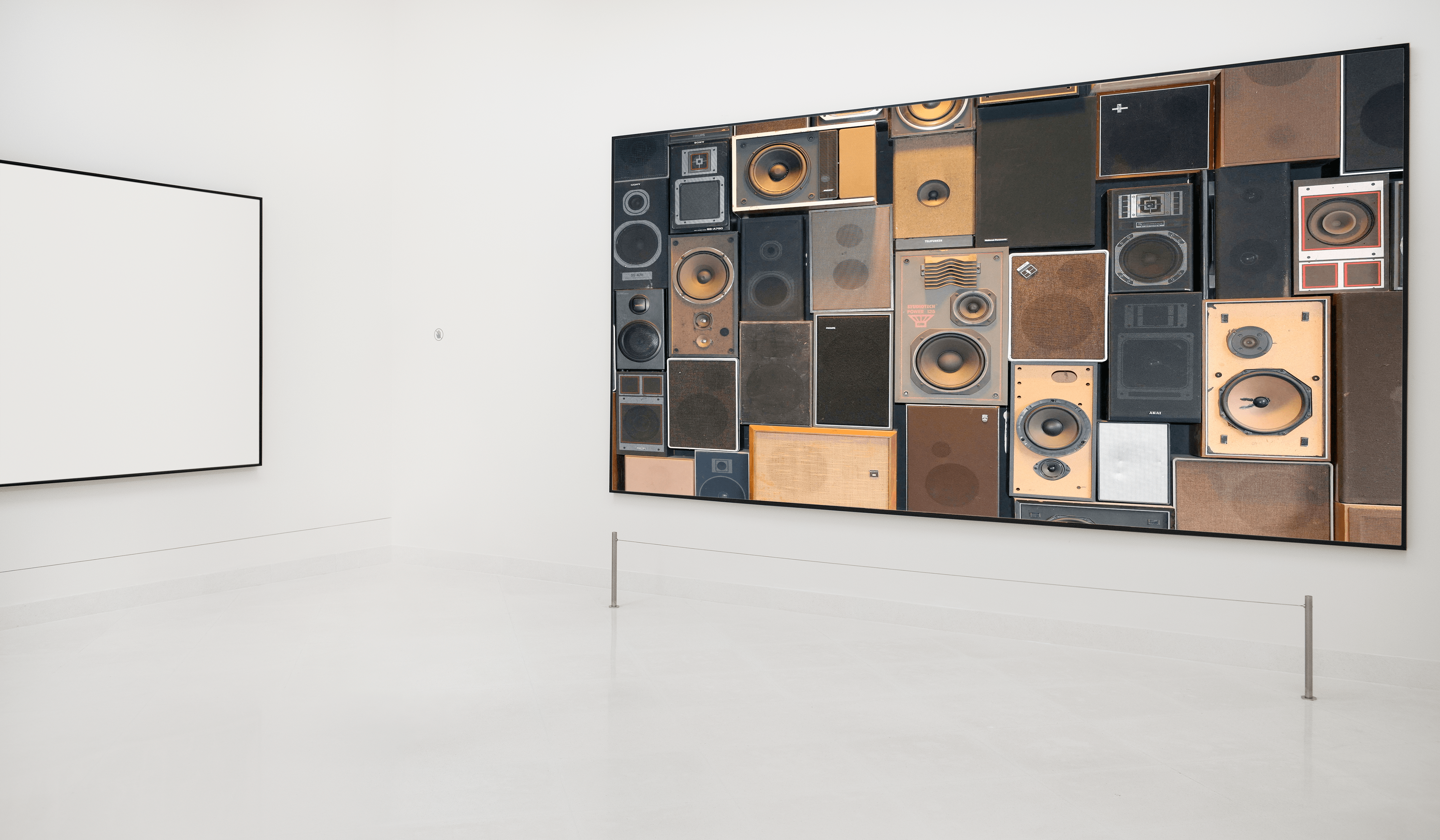
Check out the full experience here. The sketch uses the mouse position starting from the bottom of the screen. The code is located here as well.
The idea for this projected start with my work in my Physical Computing class. I began experimenting with hold headphones that I had in my apartment which no longer worked. Initially, I was playing with the idea of creating an interactive speaker matrix textile using e-waste. After experimenting with the components and Arduino, I narrowed the scope of my project down to its current status.
I have create a mock-up of a larger installation which uses speakers that have been thrown away and repurchases them into a fun experience. When the attendee enters the space, they are greeted with the sound of a slowed down version of the Jackson 5’s “I Want You Back.” As they move closed to the image on the wall, the speed of the song playback increases. Once close enough, the song plays at normal speed and it becomes a dance party.
I really wanted to create something that was purely fun and this surely has been to make. I think about what this would look like in an actual space and how the interactions would change when there are multiple people. When the party is going and someone enters, triggering the playback to go very slow again, will that person run up and join the party or will they feel awkward and leave the space.
On the physical side, the speakers will be playing a MIDI version of the song’s baseline which has been coded into Arduino. Currently, I am only using Arduino without a synthesizer so I am only able to play one speaker at a time. I have the Arduino coded to alternate the sound between speakers in relation with the attendees location in the room.
For room detection, I am currently working with ML5 to track the shoulder points. The distance between these pints will increase as the person gets closer to the camera which will set the playback rate.
Challenges:
The major challenges I’ve had relate to the fact that I have a lot going on currently in the code. With a particle system, ML5 and sound running, the sketch gets slowed down. I am still working to figure out how to clean up my code in order to smooth it all out. Originally, I had the particle colors picked from the image but chose to comment that out as it was tremendously slow.
The other challenge I am currently having is on the Arduino side. I am using code from Ton Igoe to code the music. I am having issues getting the code to alternate between speakers but should have that figured out soon.
Code and My Future Work:
I’ve really enjoyed learning to code, especially when concepts click in my head! Also, debugging my work is both frustrating and satisfying. In regards to my work in the future, I do plan to incorporate coding into my work mainly through physical components. I am also interested in data visualization so I do plan to explore that as well.
